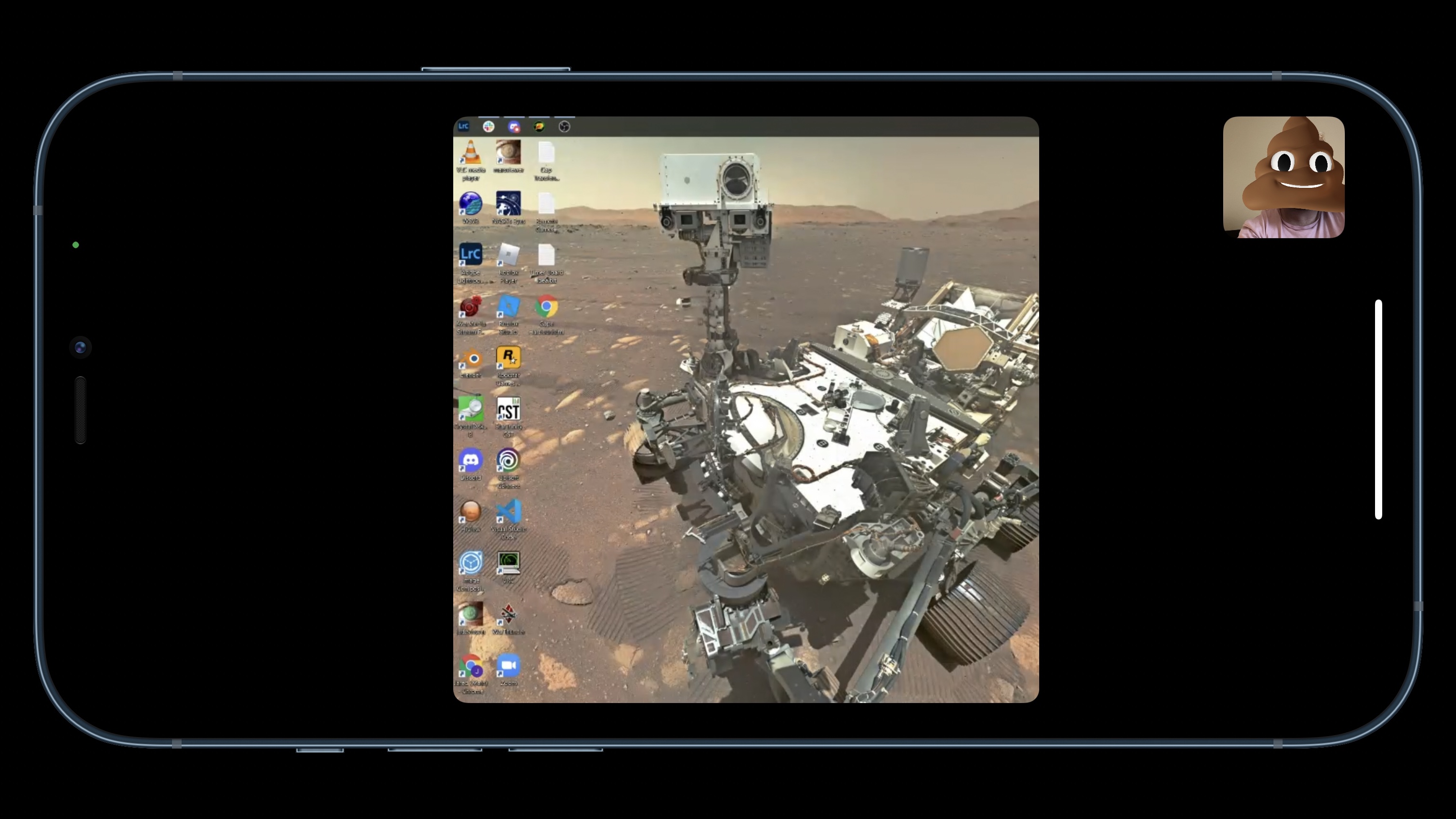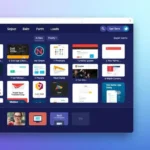To screen share on FaceTime as a Windows user. Use a workaround by downloading the Windows version of the Chrome browser & the Google Meet extension. Start a video call in Google Meet with the person you want to share your screen with. Once in the call. Click “Present now” & select the screen or application you want to share. Unfortunately, FaceTime itself is not natively supported on Windows. So this method provides an effective screen-sharing alternative during a video call.
How to Screen Share on FaceTime for Windows Users. Learn how to screen share on FaceTime as a Windows user. Follow these easy steps and tips to connect with friends and family. Start sharing your screen today!

Understanding FaceTime’s Screen Sharing Feature
FaceTime is known as Apple’s flagship video calling application. Recently, Apple introduced the screen-sharing capability on FaceTime. This feature allows users to share their screens during calls. Unfortunately, Windows users face challenges when trying to access FaceTime. However, with some effective methods, they, too, can utilize the screen sharing functionality with ease. To access specifics regarding this feature’s compatibility, check out the article here: Screen Share Over FaceTime.
While using FaceTime, many users have found that they need to share their screens. Screen sharing enhances communication, making it easier to showcase presentations, documents, or even software functionality. For Windows users, achieving this goal seems complex initially. Yet, a remote access solution can facilitate this process smoothly. With that said, Windows users can explore several methods that grant them access to FaceTime’s features.
Setting Up FaceTime on Windows
To start, establish a FaceTime account through a compatible Apple device. This requirement arises because FaceTime is inherently an Apple application. Subsequently, users can create an Apple ID to initiate their FaceTime journey. Afterward, they can access their Apple ID from the web. When completing this step, use a reliable internet connection. A stable network ensures minimal interruptions during the call.
Next, download a remote desktop application. Several applications exist, tailored for this purpose. Tools like TeamViewer or AnyDesk allow users to share their screens effectively. These applications enable users to connect their Windows machines with someone using FaceTime. Once configured, users can initiate a FaceTime call from an Apple device.
During the call, the Windows user can share their screen through the remote desktop application. This dynamic opens numerous collaborative opportunities. Windows users can engage with their contacts in real time, sharing thoughts and visual concepts. Hence, setting up FaceTime on Windows does not need to be a daunting task.
Preparing for Screen Sharing
Preparation is crucial when screen sharing via FaceTime. First, ensure you have the latest software updates. Outdated software can lead to unexpected complications. Therefore, regular updates help maintain the best performance while using the application. Additionally, check the permissions of your remote access application. Proper settings allow for seamless screen sharing during your call.
Next, choose the content you will share ahead of time, whether it’s a PowerPoint presentation, a specific document, or a website. Being organized will enhance the experience. Familiarize yourself with the features of your remote desktop application. Knowing how to share your screen will save time during the actual call.
Test your settings before initiating the call. This simple step can prevent issues later. Ensure that your microphone and camera are functioning correctly. Clear audio and video contribute to better communication. By being prepared, you can focus on your interaction and content rather than technical difficulties.
How To Use Remote Desktop Applications
Firstly, download a remote desktop application that suits your needs. TeamViewer is popular due to its user-friendly interface. For installation, follow the onscreen guidance. This application enables remote control and screen sharing efficiently. Once installed, configure access by following the necessary steps.
Secondly, initiate a connection to the Apple device. Use the unique ID provided by the remote desktop application. Enter this ID into the Apple device to establish the connection. During this process, ensure both users are online. Proper connectivity is essential for sharing screens efficiently.
Finally, when the connection is established, choose the screen sharing option in TeamViewer. Clicking on “Share Screen” allows the display of your Windows screen. Once shared, both users can interact dynamically. This connection encourages collaboration, as discussions revolve around the shared content.
Common Challenges in Screen Sharing
Even with the best intentions, obstacles may arise during the screen-sharing process. One common issue involves connection speed. A slow internet connection limits functionality. To address this, switch to a wired connection if possible. Improvements in speed provide a smoother experience.
Another challenge involves permissions. Ensure you grant the necessary permissions to your remote desktop application. Without proper authorization, screen sharing might fail. Always check settings before the call. This precaution saves time and avoids frustration.
Lastly. Software compatibility issues may occur. Ensure that both users have The same version of The application installed. If versions differ. Features may not work as intended. By addressing these challenges proactively. Users can streamline their experiences.
Features of Screen Sharing on FaceTime
- 🖥️ Share your entire desktop.
- 📑 Present documents in real-time.
- 🎨 Collaborate on creative projects.
- 📊 Showcase spreadsheets & graphs.
- 🎮 Guide others through video games.
- 💬 Communicate seamlessly using audio.
- 🛠️ Use multiple display shares when needed.
Sharing Specific Applications
When screen sharing during FaceTime, you may not want to share your entire screen. This approach can lead to privacy concerns. Instead, focus on sharing specific applications. Most remote desktop applications allow you to select which window or application to share. By doing so, you retain control over what others see.
To share an individual application, open it before initiating the screen sharing session. This way, you can easily select the application window. It helps demonstrate particular software-related tasks without exposing unnecessary information, allowing you to maintain confidentiality while collaborating.
Remember to close other applications that you do not wish to share during the call. This action not only secures your privacy but also declutters your screen. A clean desktop makes it easier for your counterpart to focus on the task at hand.
Maximizing The Screen-Sharing Experience
Enhancing the screen-sharing experience requires implementing a few tips. First, communicate the agenda clearly before starting the screen sharing. This action sets expectations and helps keep the discussion on track. Second, engage with your audience. Ask questions and invite input to maintain interest during the session.
Utilize interactive tools where applicable. Many remote desktop applications have integrated chat features. These features allow users to leave comments or suggest changes during the presentation. By utilizing these tools, users can create a dynamic and collaborative environment.
Finally, take brief pauses during the session. This practice provides moments for participants to absorb information and allows time for any questions or clarifications. By pacing the session, everyone can follow along comfortably.
Recording Screen Sharing Sessions
Recording your screen sharing sessions can be invaluable for later review. Many remote desktop applications include a built-in recording feature. This feature allows you to capture important discussions or presentations. Having these recordings facilitates playback for participants to revisit key points.
Additionally, ensure that all participants agree to the recording. Consent builds trust and adheres to privacy policies. Communicate the reason for the recording clearly. This transparency avoids misunderstandings regarding the session’s intent.
After the session, share the recorded file with participants and encourage them to review it as needed. This approach enhances retention and engagement with the material presented. It allows for further discussions based on the recorded content, extending the learning experience.
Staying Secure While Sharing Screens
Security is a significant concern when sharing screens. Protect your information by being aware of what you are sharing. Only present content that is appropriate for your audience. Avoid disclosing sensitive information during the call. Always review your desktop for any private files before initiating a session.
In addition, use trusted remote desktop applications. Stick to applications with good reviews and a proven track record. This practice mitigates risks associated with less reputable software. Furthermore, ensure that both users have up-to-date security protocols enabled.
Support your privacy with strong passwords for your remote desktop software. Changing passwords regularly adds an extra layer of security by implementing these practices. You safeguard your data during screensharing sessions.
My Personal Experience with FaceTime on Windows
Using FaceTime for screen sharing on Windows has been enlightening. I often share presentations with colleagues. Initially, I faced many hurdles with software compatibility. After finding the right applications, the process became easier. I learned how to manage my desktop properly, ensuring nothing sensitive was on display. This experience improved my collaborative efforts immensely.
Facilitating discussions through screen sharing has enriched my professional relationships. Each session has turned out to be a learning experience for all involved. I encourage everyone to explore screen sharing on FaceTime with an open mind.
Exploring Alternative Solutions
If you prefer not to use FaceTime, several alternatives exist. Zoom, Microsoft Teams, and Google Meet are popular choices. Each of these applications has integrated screen-sharing functionalities, providing convenient solutions for Windows users wanting to collaborate.
When deciding on an alternative, consider the goals of your intended meeting. Each platform has unique features catering to different needs. Choose the option that aligns with your audience and purpose.
Testing various platforms can help identify which provides the best user experience. By doing so, you can discover an alternative better suited to your collaboration style.

| Specification | How to Screen Share on FaceTime for Windows Users | Zoom | Skype | Google Meet | Microsoft Teams |
|---|---|---|---|---|---|
| Platform Availability | Windows (via workaround) | Windows, Mac, Linux | Windows, Mac, Linux | Web, Windows, Mac | Web, Windows, Mac, Mobile |
| Screen Sharing Support | Yes (using third-party app) | Yes | Yes | Yes | Yes |
| Video Quality | Depends on the third-party app | Up to 1080p | Up to 1080p | Up to 720p | Up to 1080p |
| Audio Quality | Affected by a third-party app | High quality | High quality | Good quality | High quality |
| Ease of Use | Moderate (requires setup) | Easy | Easy | Easy | Easy |
| Compatibility with Other OS | Requires workaround | Cross-platform | Cross-platform | Cross-platform | Cross-platform |
| Free to Use | Yes (depends on app) | Yes (with limits) | Yes | Yes | Yes (with limits) |
| Video Conferencing | No | Yes | Yes | Yes | Yes |
| Screen Annotation | No | Yes | Yes | No | Yes |
| Recording Feature | No | Yes | Yes | Yes | Yes |
| Chat Feature | No | Yes | Yes | Yes | Yes |
| Screen Sharing Limitations | Limited to Windows users | None (depends on plan) | None | None | None |
| Integrated with Other Services | No | Yes (Google, Microsoft) | Yes | Yes | Yes |
| User Interface | Depends on the third-party app | User-friendly | User-friendly | Simple | Simple |
| Notifications | No | Yes | Yes | Yes | Yes |
| Maximum Participants | Limited (one-to-one) | 100+ | 50 | 100 | 300+ |
| Customer Support | Limited | Good | Good | Good | Good |
| Application Development | No dedicated app | Dedicated app | Dedicated app | Dedicated app | Dedicated app |
| Security Features | Depends on the third-party app | End-to-end encryption | End-to-end encryption | Encryption | End-to-end encryption |
| Installation Requirement | Depends on third-party app | Easy install | Easy install | No installation required (Web) | Easy install |
FaceTime on Android and Windows. How iOS 15 makes it all work.
How to Screen Share on FaceTime for Windows Users: FaceTime on Android and Windows. How iOS 15 makes it all work. How to Screen Share on FaceTime for Windows Users
https://www.youtube.com/embed/KDInToKqbTw
Understanding FaceTime & Screen Sharing
FaceTime is a popular video calling app. It allows users to connect using Apple devices. This includes iPhones. IPads & Macs. The app gained popularity for its user-friendly interface & features. However, many Windows users feel left out. They cannot access FaceTime directly. This can frustrate those wanting to connect with friends or family on Apple devices. FaceTime offers many features, including screen sharing. It enables users to share their screens during calls. This process enhances the interaction experience.
There are various situations when screen sharing is beneficial. For instance, you may need assistance with a software issue. Perhaps you want to show a presentation or share photos. These scenarios highlight the importance of sharing your screen. While FaceTime itself doesn’t support Windows, you can still find ways to connect. It is essential to explore different methods to achieve screen sharing on FaceTime.
Several methods exist for Windows users wishing to screen share. Various third-party applications can bridge the gap. These apps usually mimic FaceTime features and can help you connect with Apple users seamlessly. Some offer video calling, while others focus solely on sharing screens. You might want to check this resource for more insights.
Additionally, be aware of alternatives available in the market. Services like Zoom and Microsoft Teams provide robust features. They allow users to share screens easily, regardless of the operating system. Windows users can easily schedule meetings and share their screens. Moreover, they allow collaboration in real time, making them effective. You can also visit this discussion thread for user experiences.
Setting Up FaceTime Alternatives on Windows
To start screen sharing, you need an application. Most users turn to software like Zoom or Skype. Both have user-friendly interfaces and straightforward setups. Download the application from its official site. Install it on your Windows machine before proceeding. After installation, create an account if required. Most applications offer a simple signup process. You can usually integrate your existing email address.
Next, familiarize yourself with the application’s interface. Each one has unique features and tool locations. Spend some time exploring the layout. Look for screen sharing options in the menus. Typically, you will find these under “Share Screen” or similar headings. Pay attention to any permissions needed for screen sharing. Most applications will request access to your screen. Accept these requests to ensure smooth operation.
With everything set up, test the application. Initiate a call with a friend or family member. This way, you can check your audio and video quality. Good sound and video quality enhance the experience significantly. If issues arise, consult the application’s help resources. You can also check forums or user groups for tips. Once you’re comfortable, you can easily transition to screen sharing.
How To Screen Share Using Third-Party Applications
Using third-party applications is an effective way to connect with others. Many users find this method uncomplicated. Here’s how to do it using a popular option like Zoom. First, launch the Zoom app on your Windows device. Next, join a meeting or start a new one. You can invite your friends by sending them an invitation link. They will need to have the Zoom app installed.
Once you are in the call, look for the “Share Screen” option. Click this button to see available screens and applications to share. You can select your entire desktop or just one application. This choice depends on what you want your contact to see. After selecting, click “Share,” and your screen will be visible.
Another option is using Microsoft Teams. Similar to Zoom, Teams allows screen sharing effortlessly. Open Teams and create a new meeting. Invite your friends by sending the invitation link. Once the meeting starts, look for the “Share” button. Click it, and select the screen or application you wish to share. This functionality helps create a collaborative environment.
Direct FaceTime Screen Sharing Method for Mac Users
For those with a Mac, screen sharing through FaceTime is available. Ensure your Apple device is updated to the latest version. This makes accessing new features easier. Next, open FaceTime and start a call with your contact on the line. Look for the screen sharing option. Generally, this appears in the menu during the call. Once selected, your contact will receive a request.
If your contact accepts the request, both screens will connect. FaceTime allows for seamless transitions during calls. Users can share videos, documents, and images easily. All of this occurs in real time, making coordination straightforward. It’s an effective way to collaborate and discuss various subjects.
This method makes communication engaging. However, keep in mind that Mac features differ from Windows capabilities. This is why Windows users rely on alternatives to connect with Apple’s ecosystem. Exploring these methods will help you stay connected with your loved ones.
Advantages of Screen Sharing on FaceTime
Screen sharing offers numerous benefits for users. It promotes collaboration, especially in work settings. Team members can share presentations or documents during meetings. This functionality improves clarity and understanding significantly. When everyone sees the same screen, discussions are more productive. This feature is crucial for remote work and virtual meetings.
Another advantage is the ability to provide tech support. Friends or family can guide you through troubleshooting methods and identify issues in real time. This assistance eases anxiety when dealing with tech problems. For instance, you can use screen sharing to show errors on your laptop. Immediate help is often more effective than written instructions.
Moreover, screen sharing benefits educational purposes greatly. Teachers can illustrate concepts during virtual classes, and students can participate actively. The ability to share resources in real time keeps learners engaged. When used in educational settings, the visual aspect enhances understanding. This approach leads to better retention of information.
Comparison of Various Applications for Screen Sharing
| Application | Platform Compatibility | Screen Sharing Feature | Video Calling Quality | Emoji Support |
|---|---|---|---|---|
| Zoom | Windows. Mac. IOS. Android | Yes | High | 👍 |
| Skype | Windows. Mac. IOS. Android | Yes | Medium | 😀 |
| Microsoft Teams | Windows. Mac. IOS. Android | Yes | High | 🎉 |
| Google Meet | WebBased | Yes | High | 😊 |
| Discord | Windows. Mac. IOS. Android | Yes | High | 🔥 |
Personal Experiences with Screen Sharing
In my personal experience. I have used screen sharing to solve software issues. When my friend faced a problem. I quickly jumped on a call. We used Zoom To share my screen. I walked them through the necessary steps. This method made troubleshooting efficient & straightforward. Our interaction strengthened our communication skills. Screen sharing can enhance support in various situations. It’s invaluable for connecting with others.
Tips for Effective Screen Sharing
Ensure a strong internet connection before starting. A stable connection makes the experience smooth. Glitches or freezes can significantly disrupt communication. Use a wired connection if possible. This often provides better stability than WiFi. Next, close unnecessary applications on your screen. This minimizes distractions during sharing. A clean desktop helps keep everyone focused on the task at hand.
Also. Manage The screen sharing permissions carefully. Only share what is necessary during The call. Giving access To your entire desktop can lead To privacy issues. Only show specific applications unless collaboration is needed. This approach keeps your information secure while being helpful. Communicate clearly with your contact about what they will see.
Lastly. Familiarize yourself with The tools available. Different applications have unique functionalities & features. Knowing these will help you utilize them effectively. Practice using visual markers To highlight items on your screen. This adds clarity & direction during your presentations. Continuously refining these techniques will improve your screen-sharing experience.
Common Issues in Screen Sharing & Their Solutions
Screensharing can sometimes lead to unexpected challenges. Slow internet speed can be a major problem, resulting in lagging video and audio. To resolve this issue, consider moving closer to your router. Alternatively, use a wired connection for improved speed. Also, close any bandwidth-consuming applications before starting the call.
Another common issue is permission problems. Sometimes, applications may not allow screen sharing. Ensure you grant the necessary permissions regardless of the app you use. Check your settings to fix permission-related issues. Often, reinstalling the application can help resolve bugs associated with it.
Lastly, audio quality can sometimes diminish during screen sharing, which can cause frustration during important discussions. Ensure your microphone settings are configured correctly. Test audio levels before the call to verify sound quality. Encourage your contact to do the same for a seamless experience.

Can I use FaceTime for screen sharing on Windows?
FaceTime is not directly available for Windows users. However, you can use workarounds, such as using an iOS device with FaceTime to share your screen with a Windows user via other third-party applications.
What apps can I use for screen sharing with FaceTime on Windows?
You can utilize applications like Zoom, Skype, or Microsoft Teams to facilitate screen sharing. Initiate a FaceTime call on an iOS device and invite the Windows user to your preferred screen-sharing app.
Do I need an Apple ID to use FaceTime for screen sharing?
Yes, you need an Apple ID to initiate a FaceTime call. The Windows user. However, you do not need an Apple ID to participate in the screen sharing session through an alternative app.
How can I share my screen using a third-party app?
After starting a FaceTime call on your iOS device, open the third-party application of your choice and choose the screen sharing option. Follow the prompts to share your screen with a Windows user.
Is there a way to use FaceTime on Windows for video calls?
No. FaceTime cannot be used directly on Windows for video calls. You must use alternative video calling applications on Windows to connect with FaceTime users.
Are there any risks associated with using third-party apps for screen sharing?
Yes. While third-party applications can facilitate screen sharing, ensure they are from reputable sources to avoid security risks. Always check the app’s privacy policy and user reviews before use.
Conclusion
Screen sharing on FaceTime for Windows users can seem tricky, but it doesn’t have to be! By following the steps we’ve discussed, you can easily connect with friends & family. Remember to set up your Apple ID, launch the FaceTime app, & initiate a video call. Once that’s done, sharing your screen will be a breeze. With a bit of practice, you can share moments & information seamlessly. So go ahead, give it a try, & enjoy connecting with your loved ones more interactively. Happy screen sharing, & make the most of your FaceTime experience!





